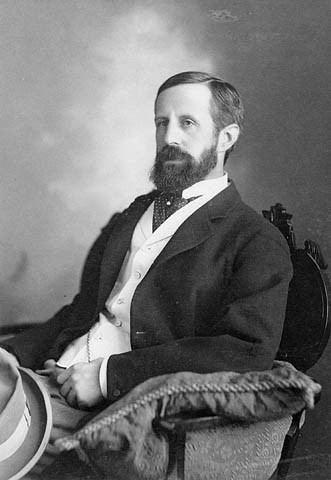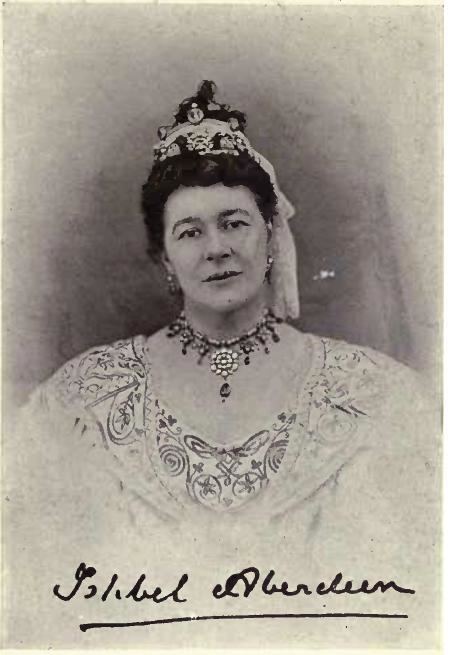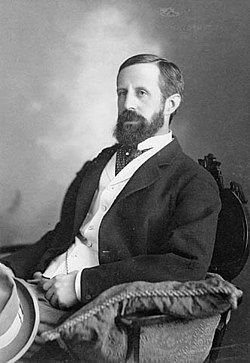Monarch Edward VIIGeorge V Name John 1st | ||
 | ||
Succeeded by The Marquess of Londonderry Spouse Ishbel Hamilton-Gordon, Marchioness of Aberdeen and Temair (m. 1877) Children Dudley Gordon, 3rd Marquess of Aberdeen and Temair Grandchildren Alastair Gordon, 6th Marquess of Aberdeen and Temair Similar People Ishbel Hamilton‑Gordon - Marchion, Queen Victoria, Michaelle Jean | ||
Preceded by The Earl of Carnarvon | ||
John Campbell Hamilton-Gordon, 1st Marquess of Aberdeen and Temair (3 August 1847 – 7 March 1934), known as The Earl of Aberdeen from 1870 to 1916, was a Scottish politician. Born in Edinburgh, Hamilton-Gordon held office in several countries, serving twice as Lord Lieutenant of Ireland (1886; 1905–1915) and serving from 1893 to 1898 as the seventh Governor General of Canada.
Contents
- Early and personal life
- Political life
- Later life
- The Rocking Chair Ranche
- Styles and honours
- Honorific eponyms
- References

Early and personal life

Aberdeen was born in Edinburgh to George Hamilton-Gordon, 5th Earl of Aberdeen and his wife, Mary Baillie, daughter of George Baillie and sister to George Baillie-Hamilton, 10th Earl of Haddington. He studied at the University of St Andrews and University College, Oxford. He succeeded as 7th Earl of Aberdeen following the death of his eldest brother, George, 6th Earl of Aberdeen.
In 1877 he married Ishbel Maria Marjoribanks, daughter to Dudley Marjoribanks, later 1st Baron Tweedmouth, and Isabella Weir-Hogg. It seems that their marriage was a love match as they were long time friends and Ishbel developed a crush on Hamilton-Gordon at just 14. Lady Aberdeen was an LL.D. of Queen's University, Kingston, Ontario. She served as President of the International Council of Women from 1893–99, and later founded the National Council of Women of Canada and the Victorian Order of Nurses.
They had five children:
Political life
Aberdeen entered the House of Lords following his succession to his brother's earldom. A Liberal, he was present for William Ewart Gladstone's first Midlothian campaign at Lord Rosebery's house in 1879. He became Lord Lieutenant of Aberdeenshire in 1880, served as Lord High Commissioner to the General Assembly of the Church of Scotland from 1881 to 1885 (he held the position again in 1915), and was briefly appointed Lord Lieutenant of Ireland in 1886. He became a Privy Counsellor in the same year. In 1884, he hosted a dinner at Haddo House honouring William Ewart Gladstone on his tour of Scotland. The occasion was captured by the painter Alfred Edward Emslie; the painting is now in the collection of the National Portrait Gallery, London, given by the Marquess’ daughter, Marjorie Sinclair, Baroness Pentland, in 1953.
He served as Governor General of Canada from 1893 to 1898 during a period of political transition. He travelled extensively throughout the country and is described as having "transformed the role of Governor General from that of the aristocrat representing the King or Queen in Canada to a symbol representing the interests of all citizens". In 1891, he bought the Coldstream Ranch in the northern Okanagan Valley in British Columbia and launched the first commercial orchard operations in that region, which gave birth to an industry and settlement colony as other Britons emigrated to the region because of his prestige and bought into the orcharding lifestyle. The ranch is today part of the municipality of Coldstream, and various placenames in the area commemorate him and his family, such as Aberdeen Lake and Haddo Creek.
He was made a Knight Grand Cross of the Order of St Michael and St George in 1895.
He was again appointed Lord Lieutenant of Ireland in 1905, and served until 1915. During his tenure he also served as Lord Rector of the University of St Andrews (1913–1916), was created a Knight Companion of the Order of the Thistle (1906), and was created a Knight Grand Cross of the Royal Victorian Order (1911). Following his retirement, he was created Earl of Haddo, in the County of Aberdeen, and Marquess of Aberdeen and Temair, in the County of Aberdeen, in the County of Meath and in the County of Argyll, in January 1916.
Later life
Aberdeen lived the later stages of his life at the House of Cromar in Tarland, Aberdeenshire, which he had built and where he died in 1934. His son, George, succeeded to the marquessate.
The House of Cromar passed to Sir Alexander MacRobert in 1934 and it was renamed Alastrean House by his widow Lady Rachel Workman MacRobert. It was leased to the RAF Benevolent Fund in 1984.
The Rocking Chair Ranche
From 1883 until 1896, he was also an owner of and investor in the Rocking Chair Ranche located in Collingsworth County, Texas, together with his father-in-law Dudley Coutts Marjoribanks, 1st Baron Tweedmouth and his brother-in-law Edward Marjoribanks, 2nd Baron Tweedmouth.
